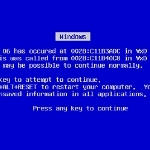By James Fisher for Windows Talk
 No, it is not a question as to what to do this winter, but it is a common question for Windows users to ask: do I use Sleep or Hibernate on my computer? What is the difference?
No, it is not a question as to what to do this winter, but it is a common question for Windows users to ask: do I use Sleep or Hibernate on my computer? What is the difference?
The Windows Help and Support Center has this explanation:
Sleep is a power-saving state that allows a computer to quickly resume full-power operation (typically within several seconds) when you want to start working again. Putting your computer into the sleep state is like pausing a DVD player—the computer immediately stops what it’s doing and is ready to start again when you want to resume working.
Hibernation is a power-saving state designed primarily for laptops. While sleep puts your work and settings in memory and draws a small amount of power, hibernation puts your open documents and programs on your hard disk, and then turns off your computer. Of all the power-saving states in Windows, hibernation uses the least amount of power. On a laptop, use hibernation when you know that you won’t use your laptop for an extended period and won’t have an opportunity to charge the battery during that time.
Hybrid Sleep/Article Continued Here
This excerpt is shared with permission from Windows Talk.




